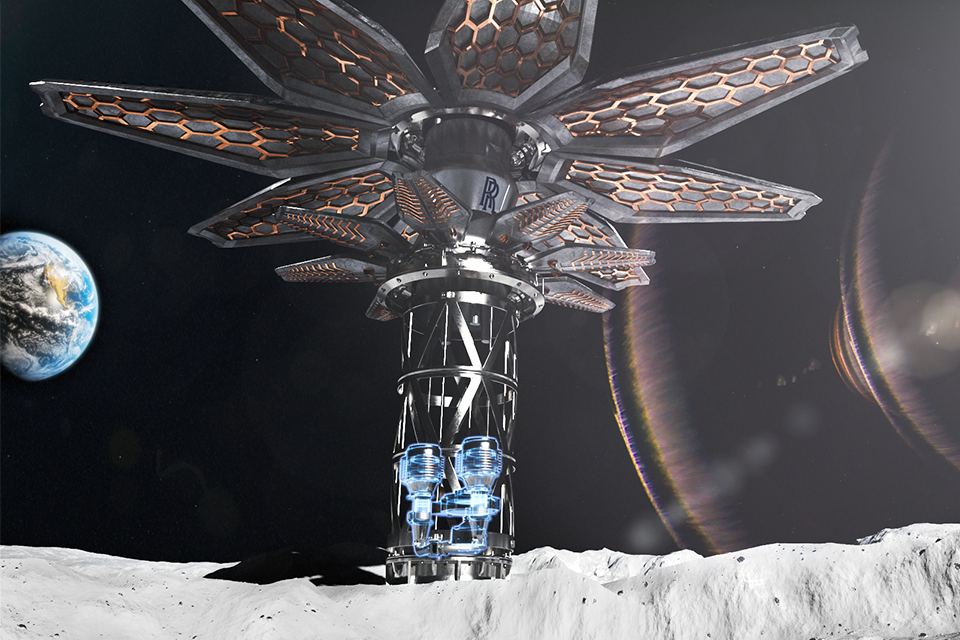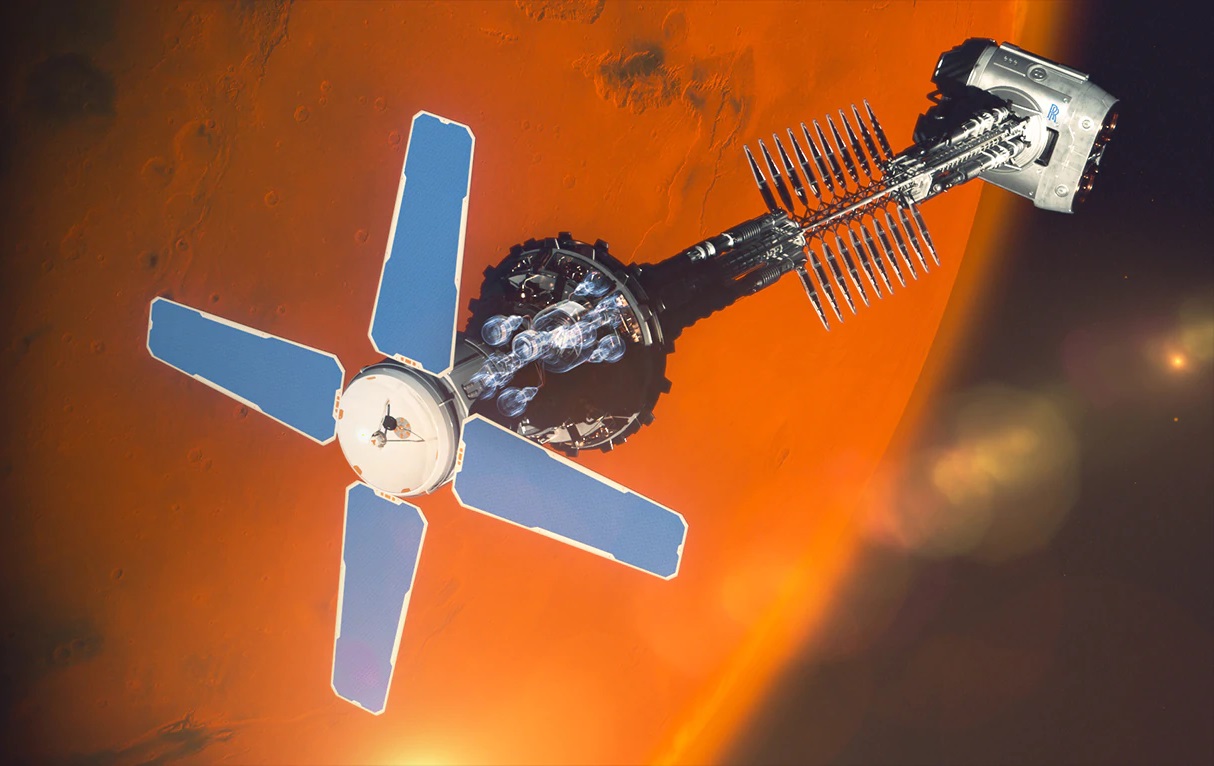If human beings intend to become an interplanetary species (or interstellar, for that matter), then we are going to need new propulsion methods that combine a significant level of thrust with fuel-efficiency. One option that NASA has been exploring for decades is spacecraft that rely on nuclear power, which can take the form of nuclear-electric or nuclear-thermal propulsion (NEP/NTP).
In the current era of space exploration, other space agencies are looking into this technology as well. For instance, the UK Space Agency recently signed a contract with the British automotive engineering firm Rolls-Royce. As per their duties, Rolls-Royce will investigate applications for nuclear power and propulsion. Given the company’s record of mechanical, electrical, and nuclear power solutions
This contract represents the first step in a process that will define and shape nuclear power solutions for the UK Space Agency, as well as the European Space Agency (ESA). Based on previous studies and experiments from the early Space Race era, nuclear power has proven itself to be an effective means of propulsion and (best of all) relies on time-tested and validated technology.

Today, there is no shortage of researchers extolling the benefits of nuclear power as a means for space exploration. However, research into possible applications has been somewhat limited since the closing of the Apollo Era. As such, recent efforts to get the ball rolling again have been met with a great deal of excitement. As Dave Gordon, the UK Senior Vice President of Rolls-Royce Defense, explained in a company press release:
“We are excited to be working with the UK Space Agency on this pioneering project to define future nuclear power technologies for space. We believe there is a real niche UK capability in this area and this initiative can build on the strong UK nuclear network and supply chain.
“We look forward to developing this and other exciting space projects in the future as we continue to develop the power to protect our planet, secure our world and explore our universe.”
As noted, research into nuclear propulsion dates back to the early Space Age. Between 1959 and 1972, NASA’s Space Nuclear Propulsion Office (SNPO) conducted 23 reactor tests at the Nuclear Rocket Development Station at AEC’s Nevada Test Site, in Jackass Flats, Nevada. In 1961, NASA and the Atomic Energy Commission (AEC) came together to embark on the Nuclear Engine for Rocket Vehicle Applications (NERVA) program.
The purpose of this program was to develop a nuclear-thermal rocket (NTP) that could allow for rapid transport to the Moon, Mars, and other locations in deep space. In an NTP rocket, uranium or deuterium reactions are used to heat liquid hydrogen inside a reactor, causing it to ionize into a hot plasma that is then directed through nozzles to create thrust.
In contrast, a NEP rocket involves the same basic reactions generating heat, which is then used to generate the electricity that powers an electric engine (like a Hall-Effect Thruster). Unfortunately, shifting priorities and a changing budget environment led to cutbacks that forced NASA to shelve its work with nuclear propulsion by the end of 1972.
According to a technical report drafted by Doctor Michael G. Houts (the NTP principal investigator at NASA Marshall), an NTP rocket could generate 200 kWt of power using a single kilogram of uranium for a period of 13 years – which works out to a fuel efficiency rating of about 45 grams per 1000 MW-hr (twice that of chemical rockets). At that rate, a nuclear thermal rocket could make the trip to Mars in half the time (100 days!)
In recent years, research into nuclear propulsion has once again resumed at NASA’s Marshall Space Flight Center. With the UK Space Agency on board now as well, it’s likely that the ESA will be investigating nuclear propulsion for future missions as well. Roscosmos is also pursuing NEP technology with its Transport and Energy Module (TEM) program, with plans to make the first reactor tests in the early 2020s and the first orbital flight test by 2030.

In 2017, the China Aerospace Science and Technology Corp. (CASC) – the Chinese National Space Agency’s (CNSA) main contractor – released its “Space Transportation Roadmap.” In addition to the development of a reusable spaceplane (similar to the X-37B), this document also called for the creation of a single-stage-to-orbit (SSTO) spaceplane and fully-reusable rockets by the 2030s, and a nuclear-powered shuttle by 2045.
Between NASA, the ESA, Roscomos, China, and India, there are some very ambitious plans for space exploration in the coming decades. These include returning to the Moon (or sending astronauts there for the first time) and building bases that would allow for a sustained human presence. Between the 2030s and 2040s, all the major space players hope to have placed footprints (and possibly habitats) on Mars as well.
As Dr. Graham Turnock, Chief Executive of the UK Space Agency, indicated in an agency press release:
“Space nuclear power and propulsion is a game-changing concept that could unlock future deep-space missions that take us to Mars and beyond. This study will help us understand the exciting potential of atomic-powered spacecraft, and whether this nascent technology could help us travel further and faster through space than ever before.”

According to UK Science Minister Amanda Solloway, this research also represents an opportunity for the aerospace industry. As government and industry search to find ways to rebuild on more sound and sustainable economic models, space exploration could use this time to introduce fresh and more far-seeing thinking:
“As we build back better from the pandemic, it is partnerships like this between business, industry and government that will help to create jobs and bring forward pioneering innovations that will advance UK spaceflight.
“Nuclear power presents transformative possibilities for space exploration and this innovative study with Rolls-Royce could help to propel our next generation of astronauts into space faster and for longer, significantly increasing our knowledge of the universe.”
In three years, the first crewed mission beyond Low Earth Orbit (LEO) for the first time since the end of the Apollo Era (1972). By the end of the decade, we hope to have a permanent infrastructure on and around the Moon that will facilitate missions to Mars. By mid-century, we could even be sending astronauts to the Main Belt and have a permanent outpost on Mars.
Chances are, it will be spacecraft equipped with NTP or NEC engines that will be making the journey, transporting crews and cargo to and from Earth.
Further Reading: Rolls-Royce, UK Space Agency

